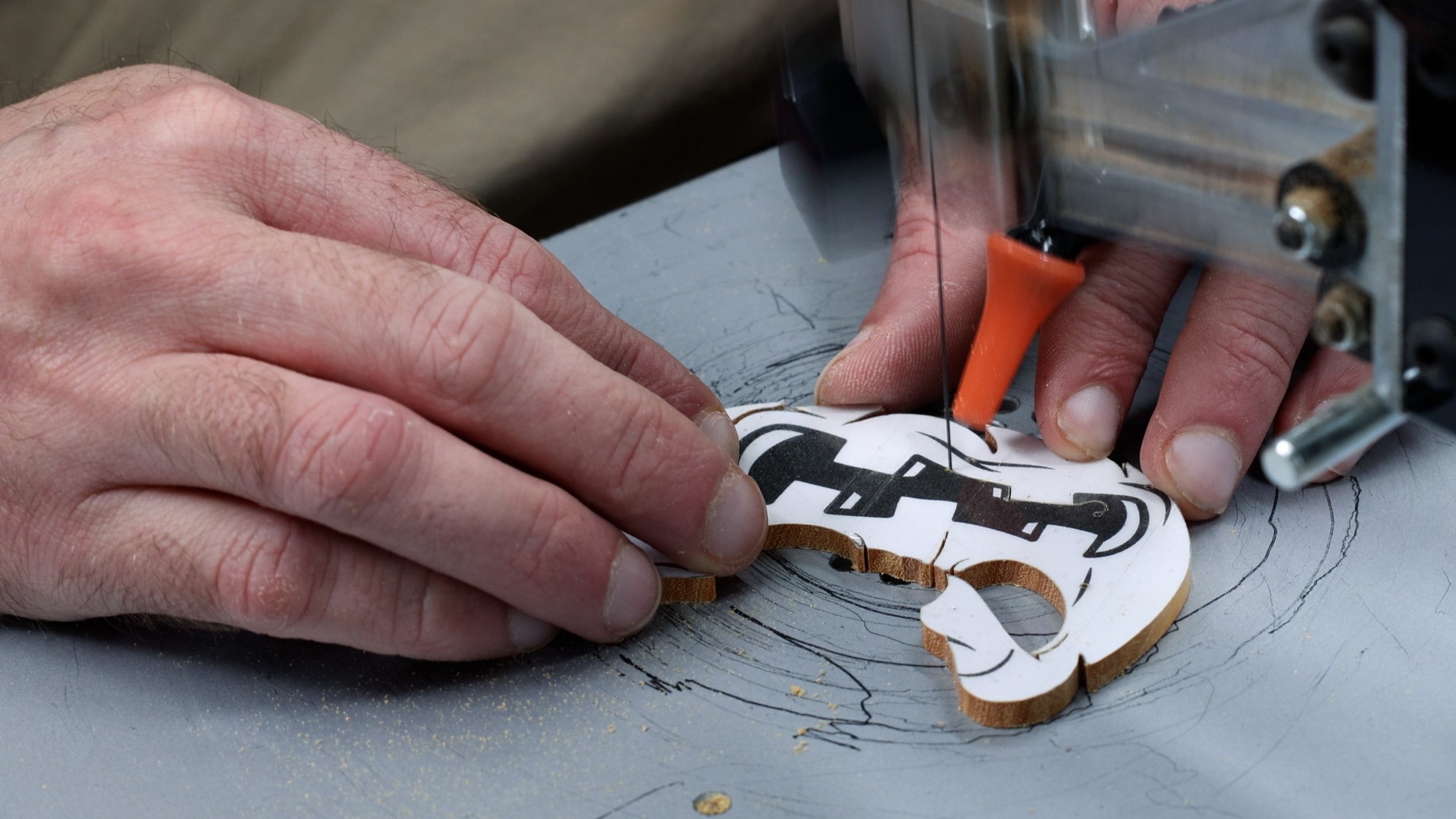Want Better Scroll Saw Projects? DO THIS!
Getting The Most from Your Scroll Saw Projects
Scroll sawing is one of the best ways to enjoy woodworking. There’s something Zen like about it; put on your headphones and zone out while you create something beautiful. In the video above, I show how I turned a fun picture of some jack-o-lanterns into scroll saw art you can hang on a wall or place on the mantle. What I like about my scroll sawing process is the flexibility. You don’t have to use the same picture that I did in order to get great results. You get those results in part by choosing the right scroll saw blades. Below, I include links to the types of scroll saw blades I use. As an Amazon Associate I earn from qualifying purchases.
Which Scroll Saw Blade Should You Use?
When it comes to scroll saw blades, there are a lot of choices, but don’t let that overwhelm you. Woodworkers have already done a lot of the legwork for you. I even have a video dedicated to it! I took the most common types of scroll saw blades and put them through their paces by cutting a variety of materials. Then I compared the results to see which performed best. You can check that out here: Scroll Saw Blade Shootout!
If you want to skip the video and want the quick answer, based on my experience, pick up a #5 Reverse Tooth Blade, also listed as a #5R. I find a #5R performs well in just about every setting. You can easily cut thin wood (less than 1/2" thick) regardless of the wood species. It will absolutely cut thicker material, but that’s when wood species starts to play a factor. This applies to any scroll saw blade, not just a #5R. The density and oiliness of the wood species impacts how well a blade will cut. Small blades have fine teeth. That means less saw dust can be removed while cutting, causing the blade to heat up. It also means the teeth can gum up when working with oily species.
A super dense wood will be harder to cut than a super soft wood. Think about bass wood, which is very light and can dent with just your fingernail. Now, compare that to ash, which is used for baseball bats. That’s a huge difference in density! However, now that I think about it, I would like to see someone attempt to use a baseball bat made from bass wood….
I tend to use exotic wood species in my art when I’m in need of a certain color. Because of their growing environment, these species are traditionally much denser and oilier than U.S. domestic woods such as walnut. Knowing this is the case, I often use more scroll saw blades when cutting thick exotic boards. Fortunately, it’s rare that I use wood pieces thicker than 1/4" so my trusty #5R works great for these oily woods, even if they gum up a bit faster. Regardless of density or oiliness, if you are cutting wood thinner than 1/2" thick, try a #5R. It’s a good place to start and will likely suit your needs. You can always move up to a #7 or higher if your blade isn’t up to par with a thicker, denser, oilier wood.
What Other Blades Should I use?
When I’m not using a reverse tooth blade, I’m reaching for a crown tooth. I absolutely love using crown tooth blades because of the impeccable quality of cut. They give me cuts that are so clean the wood looks shinny and polished. They are an absolute dream to use. However, the teeth don’t allow for a lot of saw dust removal compared to a reverse tooth blade. Plus, they cut much slower - so there are a few downsides, if you consider those to be negative aspects.
I use crown tooth blades for fine work such as cutting small spaces and making tight radius cuts. My go-to is a #3, but I do move down to a #2 if the wood isn’t too dense or oily. My thoughts and experiences with crown tooth blades can fill up an entire blog so that’s a topic discussion for the future.
If you’d like to jump into scroll sawing and don’t know where to start, grab yourself a reverse tooth blade and get to work. There are some handy scroll saw blade charts online that could help guide you, if you want a second opinion. I find that I agree with a lot of the information. There are a few aspects I disagree with in the charts, but these are minor and based entirely on my own experiences with my saw and the woods I typically use. All in all, these are great resources to get you started.


